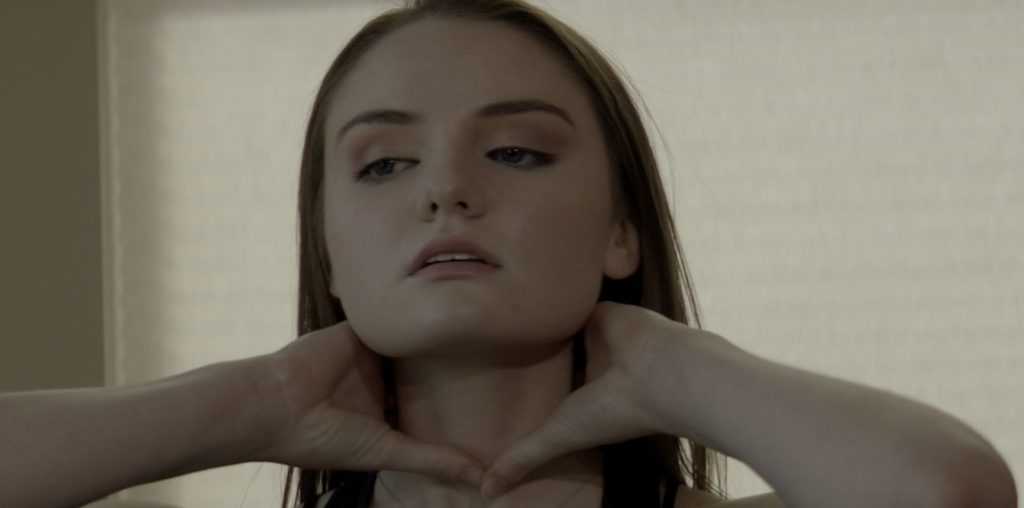
Perhaps it sounded like a good idea at the time – “The ‘Nutty Professor’ Does Auschwitz”?
Sometime around 1972, director, star, egomaniac Jerry Lewis embarked on a most bizarre and many would argue questionable film project. Not since “Springtime for Hitler” would the cinematic world be privileged to such a fun time romp through Nazi Germany.
The film in question is, of course, the now notorious and largely unseen “The Day the Clown Cried,” a film about, of all things, a concentration camp clown whose job it is to lead children into the ovens (as if clowns weren’t disturbing enough already). Since the film has only ever been seen by a handful of people, one is left to ponder – could it possibly be as bad as it sounds?
In short – the answer would seemingly be YES! After years of searching for even the most scant facts and information on this well buried film, FILM THREAT recently managed to procure a copy of the shooting script – some 164 pages of misguided, disturbing, egomaniacal and just plain f****d-up material that would have the crowd at Nuremberg scratching their heads in utter disbelief. Not only is it horribly written and lacking in any humor (the script specifically notes when things should be “played for laughs”), but after about the first fifty pages what starts out as merely a bad screenplay degenerates into a deranged, unconscionable disaster that almost makes you feel guilty for reading it… almost.
“The Day the Clown Cried” has been shrouded in mystery for years – the stuff of legend. Was the film ever even made? If so, is it really a comedy about a clown leading children into ovens? Any hard details regarding the film, even what it is actually about, have been all but unobtainable. That is, UNTIL NOW!
EXT. PARIS CIRCUS – NIGHT
This comedic opus begins with a once great, now down and out clown by the name of Helmut Doork (played by Mr. Jerry Lewis) as he is fired from the circus where he is not appreciated. After being dropped, Doork heads to the local watering hole where he attempts to drown his sorrows. After a few pops, Doork begins to poke fun at Mr. Hitler, much to the chagrin of the Gestapo agents sitting in the bar. He is promptly arrested and sent off to a prison camp.
The next 25 pages read something like a really shitty version of “Stalag 17” as Helmut learns to deal with the prison camp hierarchy. He fumbles around like an idiot as the sadistic Nazi guard taunts him all the while waiting for alleged “release papers” that obviously will never come. His fellow barracks-occupants are less than endeared to him as he refuses to perform for them or try to make them laugh. For some reason he views his status as a clown as somehow being above performing for these men (an unintentional reflection, perhaps, of Lewis’ notorious arrogance). He is far more concerned about preserving his legend as a great performer than he is of appeasing these men.
After alienating himself from his fellow prisoners, Helmut is disturbed to see Jewish men, women and children being brought into the camp. The loudspeaker announces “Fraternizing between Aryan and non-Aryan prisoners is strictly prohibited.” As the men grow angrier at Helmut, he is forced to perform for them under threat of physical violence. His performance sucks and the men grow angrier with him. “If he’s Germany’s greatest clown, God help the Fatherland.” Dejected, he exits the barracks and tries out his act alone in the prison yard. He hears laughter from the other side of the fence and sees that a small gathering of children are laughing at him. He takes some mud and makes an impromptu clown face. He basks in the glory of the children’s laughter.
As the weeks pass, Helmut’s audience grows to include some of the Jewish adults as well as some of his fellow political prisoners. A new prison Commandant arrives and is appalled that this clown is allowed to carry on. He orders the performances and any interaction with the Jews ended immediately. “When you rule by fear, laughter is the most frightening sound in the world.”
For the days to follow the children stand against the fence and stare disappointedly at Helmut, unable to perform for them any longer. He seems more bothered by the fact that he no longer has an audience than the fact that the children are now sad. He defies orders and begins to perform once more. The SS men order him to stop. When he continues, they viciously beat him in front of the horrified children. Helmut escapes their grasp and begins to clown around again. The children laugh again but he is quickly subdued and thrown into solitary confinement.
While Helmut is in solitary, the Nazis come upon a uniquely Nazi dilemma – they have to get the children to another camp, as they are no use in a work camp. They have the children rounded up in a boxcar awaiting the train that will take them away, however the cries of the children are an annoyance. Since they want to get rid of the children while drawing as little attention to themselves as possible, they decide to send Helmut to the boxcar to keep the children quiet. In exchange for his performance, they tell him that his appeal for release will be reviewed. Helmut agrees to perform for the children and does so, making them laugh and convincing them that they are going to a “better place.” He is accidentally locked in with the children when the train arrives and arrives with the children the next day at Auschwitz.
The Commandant at Auschwitz explains to Helmut what is done here – how the buildings without windows are ovens used to exterminate the Jewish children. He goes on to tell Helmut that as he has lead the children this far and that he now has a special bond with them, almost as if he is “one of them,” he should lead them for the remainder of their journey. It is then, in the last ten pages of the screenplay, that the true dementia of the film truly takes hold. Helmut replies “No… no! I’m not one of them. I’m not! I’m a German. A loyal German. You can’t kill me, I’m not one of them. I swear it. I’m not.” The Commandant explains that he doesn’t have to die, “I’m just asking you to lead them.” Helmut looks unwilling to comply. “Not… even to save your own life?” Helmut gives in. “I’m glad to see you’re not a self-appointed martyr. Just think! Now you’re really one of us.”
Want to find out how the script ends? Want to see more exclusive pics from the movie? What to know the true behind-the-scenes story of the making of the film? Read part two of JERRY LEWIS’ “THE DAY THE CLOWN CRIED” REVEALED!>>>


So, is it the scene in and of itself that is so bad, or was it the context?
Fom your article, I certainly understood how much you did not like the script. Message received. And after reading different parts of the script I can see it was not well-written to the point of many parts of the dialogue being painfully melodramatic. But my real concern is about the ending. I have read a lot of articles regarding the “disgusting” and “jaw-dropping” ending with Jerry Lewis as the titular clown leading a group of Jewish children into the ovens during Nazi Germany. That in and of itself I don’t see as so awful, if done in the right context. Ff Lewis’ clown did this as some sort of redemptive action – in order to keep the children distracted as they are going to their demise – I can see this almost as a memorable scene in film history
This ‘article’ is written with such malevolent venom, it bespeaks of more than a critique, but the product of something really dark, as a deep-seated loathing of Jerry Lewis. And as is almost always true of loathing, some of fulminates from inner scars, social and psychological wars fought and lost.
The author really needs to talk to someone about this poison inside….
This is lame writing, Thom.
I need this to m********e.
Just horrid